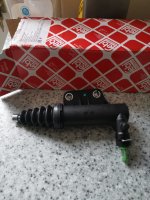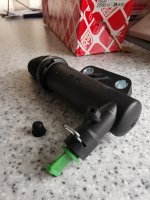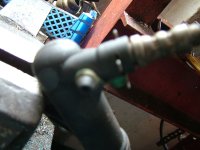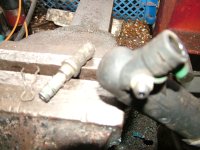Hi
I am new to the forum and this is my first post.
I have a 2012 1.3 multijet
I noticed that my slave cylinder has been leaking fluid so I have bought a new one. I have read that it is best to remove battery and battery tray holder for access which I am ok doing. I am ok fitting the new slave but what I am unsure about is how to bleed the system afterwards. I have noticed that the fluid in the holder is dirty so I would like to flush out and replace it all. Does anyone know how much fluid this will take and how to bleed the system.
Kind regards
Richard
Remember the "holder" is the brake fluid reservoir also, so probably best not to disturb it too much.
A 500ml bottle of brake fluid Dot 4 spec should be enough.
If you are lucky, personally I have bled cylinders by removing the bleeder on the slave and keep topping the reservoir up until clean fluid with no air bubbles comes out the slave cylinder just using gravity and then carefully nipping up the bleeder.
Normal process however is to have one person press the clutch pedal down and hold it down as the bleeder valve is opened and once air/fluid has come out nip up the bleeder, only then should the person on the clutch pedal bring the pedal slowly up. This process will need to be repeated several times until all air removed/no bubbles in the clean fluid coming out .
Note if the pedal pusher doesn't follow those instructions 100% the job will not be done. My ten year old daughters were more obedient in following this than my ex wife!
There are various bleeding devices available to purchase, both vacuum and pressure types. I have found the pressure ones best, but others prefer vacuum. Either way the instructions need to be followed precisely.
I have just fitted a s/h gearbox on a 2014 1.3 mj Vauxhall Combo/Fiat Doblo, you will note there is a gearbox extra support bar in the way of the clutch cylinder and also different length bolts and spacers you need to refit correctly, but nothing too technical.

If you accidentally drain the reservoir when bleeding, although not a good idea as the job will take much longer bleeding the master as well as the slave cylinders, it shouldn't affect the brakes as if you look at where the clutch master cylinder is fed from the combined reservoir, the clutch pipe is higher than the brake ones.
The reason is if you were to have a clutch hydraulic failure, then the brakes would still have fluid to work.






